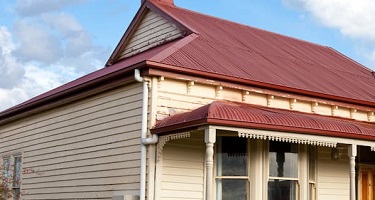We’ve compiled all of Australia’s latest household waste statistics currently available in May 2022, and surveyed 991 participants to learn more about Australians’ attitudes towards household waste.
Quick Stats
25% of Australian respondents are rarely confused about what to put in a recycling bin
60.3% of Australian respondents claim they recycle old or obsolete technology
51.3% of respondents find it moderately easy to throw away something in their home
Before throwing it away 28.9% of participants would see if an item has a resale value
In May 2022 we surveyed 991 Australian participants 18+ through Pure Profile to understand how they dispose of household waste and whether they participate in recycling and sustainability practices.
1.0 Government-Sourced Recycling Statistics
In 2018-19 Australia generated 75.8 million tonnes of solid waste. This was a 10% increase from 2016-17 with only half (38.5 million tonnes) of all waste being recycled. [1]
Interestingly Australian households generate 12.4 million tonnes (16.3%) of waste, matching the amount of waste being produced in both the manufacturing and construction industries. Households were also the largest contributors to plastic waste (1.2 million tonnes) and organic waste (6.4 million tonnes) .[1]
1.1 Recovery Rate by Type of Waste Product*
2016-17 (%) |
2017-18 (%) |
2018-19 (%) |
|
|---|---|---|---|
Masonry materials |
76.2 |
78.7 |
81.4 |
Metals |
73.4 |
75.8 |
75.5 |
Organics |
51.2 |
55.6 |
54.2 |
Paper & Cardboard |
64.3 |
66.9 |
65.4 |
Plastics |
12.6 |
14.2 |
18.9 |
Glass |
51.3 |
59.3 |
58.2 |
Textiles, leather & rubber |
25.8 |
28.1 |
26.1 |
Hazardous Waste |
29.0 |
26.6 |
26.6 |
Ash from coal-fired power stations |
49.3 |
51.2 |
47.0 |
*Recovered waste refers to waste materials sent for recycling, used for energy production or exported. The higher the recovery rate the more reusable the materials are.
It should be noted that masonry materials, metals and paper and cardboard are the three waste categories with the highest recovery rates. However, the single material with the best recovery rate was aluminium.[1]
2.0 What can be recycled?
Paper
Paper
Packaging
Toilet paper rolls
Egg cartons
Cardboard
Metals
Steel
Copper
Lead
Aluminium
Construction & Demolition
Substitute for virgin crushed rock, asphalt, metals, and timber
Low-grade roads
Pavement sub-bases
Plastics
Milk containers
Shampoo and conditioner bottles
Packaging
Food containers
3.0 Household Waste Survey Results
3.1 How would you describe the amount of belongings you have in your home?
National Average: 3.03
Overall, Australian respondents averaged 3.03/5, implying the average Australian home has a comfortable amount of belongings. This was consistent among respondents in New South Wales and Queensland, however respondents across Victoria (3.1), Western Australia (3.1), South Australia (3.15) and Tasmania (3.18) identified that they were slightly more cramped.
Respondents aged 65+ felt significantly more cramped than their younger counterparts. On the other hand respondents aged 25-34 were closer to having a comfortable amount of belongings This may suggest that as we get older we accumulate more household belongings.
Interestingly, participants who live in houses felt more cramped than those who lived in apartments, townhouses and duplexes. This may correlate with historical data identifying Australian households as the largest contributors to plastic and organic waste.
3.2 How easy do you find it to throw away something in your home?
More than half of respondents (51.3%) find it moderately easy to throw away something in their homes. Respondents from Western Australia found it easier to throw away something in their homes compared to respondents from South Australia who found it more difficult.
Interestingly respondents who live in townhouses found it easier to throw away their belongings than those who lived in houses, even though they still found throwing away their belongings to be a moderately easy task.
3.3 When you decide you no longer need something in your home, what is your first instinctive action?
I see if it has resale value |
I see if anyone I know would like it |
I donate it to a charity shop front |
I throw it in the bin |
I take it directly to a pawnbroker |
Other |
|---|---|---|---|---|---|
28.9% |
28.2% |
26.6% |
13.3% |
2.4% |
0.6% |
I see if it has resale value |
I see if anyone I know would like it |
I donate it to a charity shop front |
I throw it in the bin |
I take it directly to a pawnbroker |
Other |
|
|---|---|---|---|---|---|---|
18-24 |
30.6% |
26.9% |
18.7% |
17.9% |
5.2% |
0.7% |
25-34 |
34.5% |
24.5% |
23.1% |
14.0% |
3.9% |
0.0% |
35-44 |
34.1% |
25.2% |
24.4% |
13.0% |
2.0% |
1.2% |
45-54 |
24.9% |
31.5% |
32.6% |
10.5% |
0.6% |
0.0% |
55-64 |
18.4% |
34.7% |
32.1% |
13.2% |
0.5% |
1.1% |
65+ |
18.2% |
18.2% |
54.5% |
0.0% |
9.1% |
0.0% |
I see if it has resale value |
I see if anyone I know would like it |
I donate it to a charity shop front |
I throw it in the bin |
I take it directly to a pawnbroker |
Other |
|
|---|---|---|---|---|---|---|
House |
29.4% |
27.1% |
27.1% |
13.7% |
1.9% |
0.7% |
Apartment |
25.2% |
33.5% |
25.2% |
12.6% |
2.9% |
0.5% |
Townhouse |
37.3% |
22.0% |
22.0% |
15.3% |
3.4% |
0.0% |
Duplex |
27.0% |
27.0% |
32.4% |
8.1% |
5.4% |
0.0% |
I see if it has resale value |
I see if anyone I know would like it |
I donate it to a charity shop front |
I throw it in the bin |
I take it directly to a pawnbroker |
Other |
|
|---|---|---|---|---|---|---|
Female |
27.3% |
27.5% |
32.2% |
10.8% |
1.6% |
0.6% |
Male |
30.5% |
28.8% |
20.7% |
16.0% |
3.3% |
0.6% |
When respondents no longer needed something in their home, nearly a third (28.9%) will see if the item has resale value before throwing it away. Another 28.2% will check if anyone they know would like the item, and 26.6% would donate it to a charity shop.
Younger participants were more likely to see if something had resale value compared to older participants, who were more inclined to donate an item to charity. Female respondents were more likely to donate an item to charity, whereas men were more likely to see if something had a resale value.
3.4 Do you recycle old/obsolete technology?
Nearly two thirds (60.3%) of participants said they recycle old or obsolete technology. This may be inconsistent with data from the recent ABS data in 2016-17, stating that around “40% of e-waste was contributed by households but only half it was recycled”. [1]
Respondents from South Australia were most likely to recycle compared to respondents from Tasmania who were least likely to recycle old or obsolete technology.
Participants aged 65+ were the most likely to recycle old technology and we can see from these results that as respondent’s ages increased so did the likelihood of them recycling.
If you’re wanting to find out more about how to recycle e-waste then the Department of Climate Change, Energy, Environment and Water has a step-by-step guide.
3.5 Generally, how would you rate your efforts to recycle, reuse, or repurpose things you no longer need?
50.6% of all respondents rated themselves as average in their efforts to recycle, reuse or repurpose the things they no longer need.
Respondents from Tasmania (3.55), Victoria (3.52), and Queensland (3.50) rated themselves higher than the national average (3.49), meaning they lent more towards being good at recycling, reusing or repurposing.
Participants aged 65+ were the most likely to rate their efforts as good and we can see from these results that the age average rose with as participants got older.
The average for respondents who lived in a duplex (3.65) was significantly higher than any of the other housing types and was also higher than the national average.
3.6 Are you confused about which items should/shouldn’t be placed in the recycling bin?
It’s important to note that 25% of Australian participants are rarely confused about which items should and shouldn’t be placed in the recycling bin. Almost half (49.5%) of respondents are only confused sometimes, and over 10% often confused about which items should go in the recycling bin.
Out of all the states, South Australia (2.28) is the least confused when it comes to recycling. This is followed by New South Wales (2.42) and Queensland (2.44).
Respondents aged 55-64 years of age are the closest to being never confused. This is shown in the age average (2.15) which is significantly less than the national average (2.48) overall.
3.7 Do you donate used clothes to opportunity/charity shops regularly?
National Average: 3.59
Just over a quarter of respondents (26.3%) donated their used clothes very regularly while another quarter (26%) of respondents donated often.
Out of all the states it was South Australia that leant the most towards regularly donating their used clothes to op shops and charity shops. South Australia’s state average (3.70) was higher than the national average (3.59) and was closely followed by Victoria (3.63) and New South Wales (3.58).
It was older participants aged 65+ who often donated used clothes to charity/op shops. It’s important to note that this age group’s average (4.36) is higher than all other age groups as well as the national average (3.59)
Female participants who were the most likely to regularly donate used clothes.
4.0 Key Findings
Women were more likely to donate to charity shops than men
Not only were women more likely to donate their used clothes to charity shops, they were 12% more likely to donate an item to charity than male respondents. Males were more likely to see if something has a resale value.
South Australians are the most conscious about recycling
Our findings suggest that South Australian respondents were most likely to recycle old technology. Out of all Australian states, they were the least confused about which items should go in a recycling bin, most regularly donating their used clothes to op shops and charity shops.
60% of respondents are still confused about what to put in recycling bins
Unfortunately, 49.5% are sometimes confused, 7.5% of respondents were confused and 2.9% of respondents were highly confused about which items should and/or shouldn’t be placed in a recycling bin. With the majority of Australian respondents confused, there are definitely further improvements that could be made in this area.






